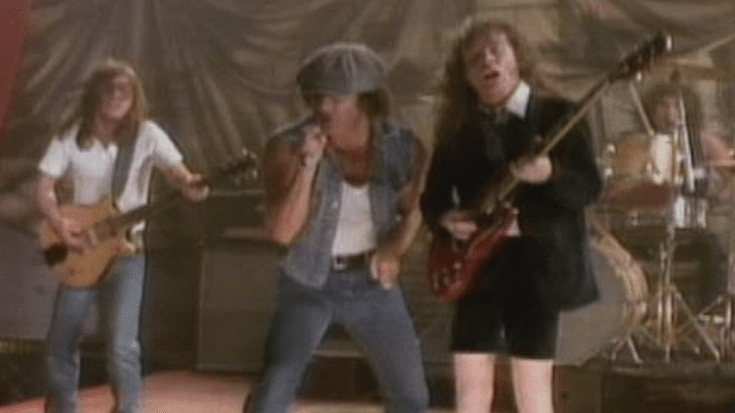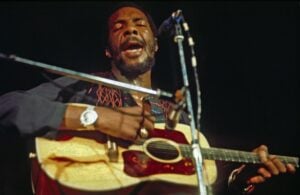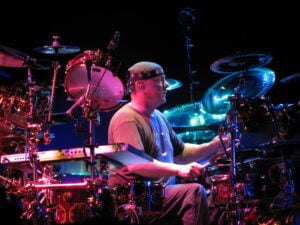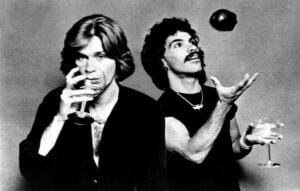Album Review: AC/DC’s Fly on the Wall Was A Missed Opportunity?

via AC/DC / YouTube
In 1985, AC/DC released “Fly On The Wall,” coming off their earlier album “Flick Of The Switch,” which they also co-produced. However, the follow-up album was produced only by the band with some help from engineer Mark Dearnley, and it was made in Switzerland—a cool place, but probably not the best for rock bands to get creative, as history would show with other bands like Motörhead who didn’t do well with “Iron Fist.”
Behind the Scenes: Production Missteps and New Beginnings
The production closeness of Malcolm and Angus Young to “Fly On The Wall” meant they might have been too close to see the music’s real sound. For instance, Brian Johnson’s singing voice wasn’t as strong by then. They added a lot of heavy reverb to make his voice sound powerful, which actually made things worse. This mix had too much guitar and not enough vocal clarity. The heavy music lost its usual energy and excitement, and even the more serious, bluesy parts didn’t hit as hard as they should have.
Simon Wright, the new drummer, had his first appearance on this album. He replaced Phil Rudd and brought some solid, basic drumming. However, the tracks felt slow and lacked energy. The song “Shake Your Foundations” didn’t live up to its potential, hardly shaking anything despite doing okay in the UK charts. The title track “Fly On The Wall” had possibilities too. It could have been a standout AC/DC song with a bit more energy and a consistently strong Brian Johnson. It’s a shame because with the right tweaks, it could have been one of their best.
But then there’s “First Blood,” which didn’t hit the mark either. The track’s playful, somewhat inappropriate lyrics feel out of place, and even Angus didn’t seem fully into it, although his guitar solo did remind some of Thin Lizzy’s Brian Robertson—which isn’t a bad thing. It’s like AC/DC were bold in recording this track, but unfortunately, time hasn’t been kind to it.
View this post on Instagram
Charting the Uneven Tracks
The song “Danger” has a catchy, but not very memorable chorus—a bit like a warning in a safety video—but the intense verses are pretty solid. It barely made a splash in charts though. “Sink The Pink,” similar to some of The Who’s intros, actually has a decent rhythm, but Johnson’s vocals are sadly lost in the mix, leaving much to be desired. And “Hell Or High Water” just meanders without any significant impact, leaving Johnson’s effort buried and hard to appreciate.
By the time the album ends with “Back In Business” and “Send For The Man,” you’re just glad it’s over. It’s not that it’s a terrible album, but AC/DC had set such high standards for themselves that any lower quality work stood out starkly. The potential was there as seen in earlier hints from “Flick Of The Switch,” but “Fly On The Wall” didn’t really raise the bar.
Glimmers of Greatness Amidst the Critical Noise
Although many might not fully appreciate “Fly On The Wall,” there are definitely some high points. “Playing With Girls” features strong, forceful rock music with brilliant guitar work, and Johnson proudly singing about his love for women everywhere. “Stand Up” feels like an anthem with heavy, powerful choruses and dazzling guitar play by Angus, and the title track does show some of Angus’ best solo work, even if the overall rhythm wasn’t fully settled.
With the 1980s music scene changing rapidly in the U.S., this album was a bit ahead of its time in some aspects. With a superstar producer like Mutt Lange, it could have turned out much differently—maybe even greatly improved in arrangement and mix to truly make those foundations shake. What we got was more like a decent EP with too much unmemorable filler, but it still managed to reach No. 7 on UK charts and succeeded in concert sales across Europe, proving that the fans still held the band in high regard despite critical views.













